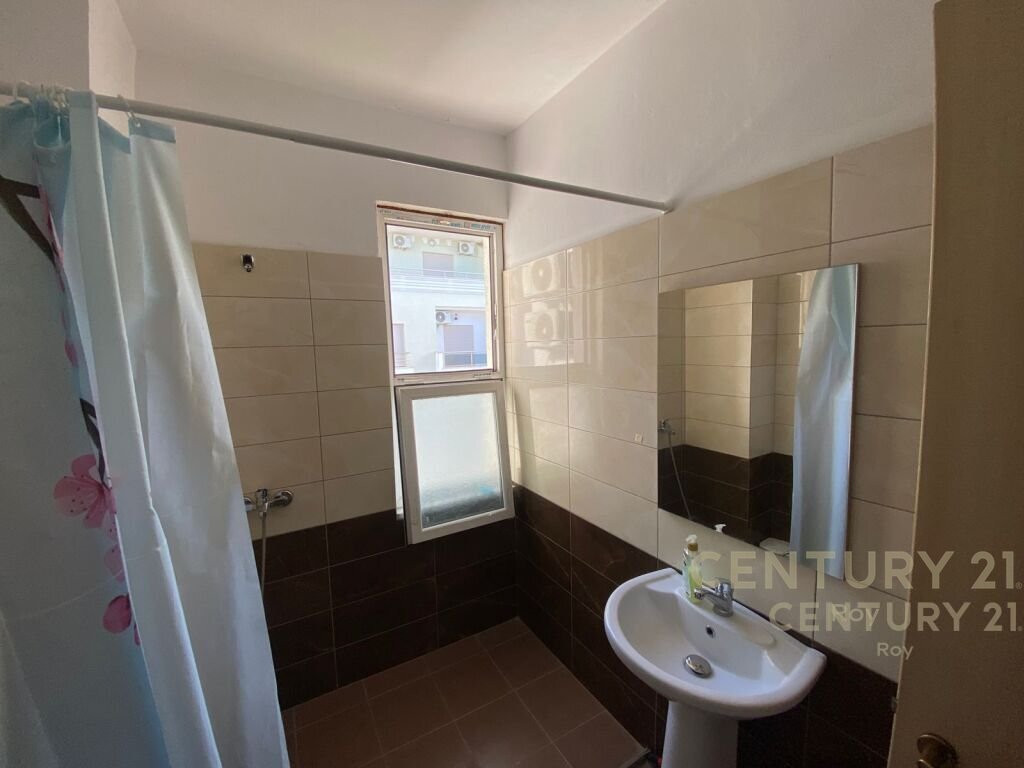Embarking on a digital nomad journey with a partner presents unique opportunities and challenges. This comprehensive guide provides a structured approach to navigating the complexities of shared travel, finances, and work-life balance, ensuring a smooth and fulfilling experience for both partners.
From meticulous planning and securing necessary documents to choosing the ideal location, maintaining a strong relationship, and optimizing productivity, this guide addresses every critical aspect of this exciting lifestyle. It delves into practical considerations, legal aspects, and financial strategies, empowering couples to make informed decisions and build a successful digital nomad partnership.
Planning & Preparation
Embarking on a digital nomad journey as a couple requires meticulous planning and open communication. This stage sets the foundation for a successful and fulfilling experience, ensuring both partners are on the same page regarding travel, finances, and expectations. Successful digital nomad couples often prioritize shared goals, flexible schedules, and a strong support system.
Travel & Financial Coordination
Effective travel coordination involves establishing clear travel schedules and budgeting strategies. Couples should collaboratively create a detailed itinerary, outlining potential destinations, travel dates, and estimated costs. This allows for flexibility while maintaining a sense of direction. Financial planning is crucial; couples should discuss and agree upon budgeting methods that suit their lifestyle and income.
Budgeting Strategies for Digital Nomads
Various budgeting strategies can be adopted by digital nomad couples. A common approach is the zero-based budgeting method, where every dollar is allocated to a specific category. This provides transparency and helps track spending. Another method is the envelope system, where cash is allocated to different categories. This can be particularly helpful for controlling impulse purchases.
A third strategy is to track expenses using budgeting apps, which allow for monitoring spending patterns and identifying areas for improvement. It’s important to factor in expenses such as accommodation, transportation, food, activities, and internet access when creating a budget.
Essential Documents & Permissions
International travel requires careful preparation, encompassing the gathering of essential documents. A checklist of these documents is vital for a smooth trip. These include passports with sufficient validity beyond the intended travel period, visa applications (if required), and proof of health insurance. Valid driver’s licenses, proof of accommodation, and travel insurance are also essential. Additionally, couples should confirm any specific entry requirements for the countries they plan to visit.
Open Communication & Expectations
Open communication is paramount in navigating the complexities of a digital nomad lifestyle. Couples should discuss their travel expectations, including desired pace, level of independence, and shared responsibilities. Honest and frequent communication helps manage expectations and prevent misunderstandings. Addressing potential conflicts proactively ensures a positive experience for both partners.
Shared Digital Workspace
A shared digital workspace is essential for a productive digital nomad experience. A dedicated space for work, regardless of location, fosters efficiency and reduces distractions. Consider a portable workstation, a dedicated workspace in a co-working space, or a designated area in a rented accommodation. This space should be equipped with necessary technology, including laptops, internet access, and reliable power sources.
The workspace must be comfortable and conducive to productivity.
Visa & Permit Acquisition
Securing necessary visas and permits for international travel is a crucial aspect of planning. A step-by-step guide to this process is essential. This involves researching visa requirements for each intended destination. It’s important to understand the specific visa types, their associated costs, and the required documentation. Contacting embassies or consulates is crucial to gather accurate information and submit applications promptly.
Visa Requirements Table
| Country | Visa Type | Requirements | Processing Time ||—|—|—|—|| Thailand | Tourist Visa | Passport validity, proof of funds, return ticket | 3-5 business days || Vietnam | Electronic Visa (e-Visa) | Passport validity, travel dates, return ticket | 3-5 business days || Mexico | Tourist Visa | Passport validity, proof of funds, travel insurance | 5-7 business days || Costa Rica | e-Visa | Passport validity, travel dates, return ticket | 2-3 business days || Portugal | Visa-free for most nationalities | Passport validity | N/A |
Choosing a Location

Finding the perfect digital nomad destination with a partner requires careful consideration of various factors. A successful location choice will not only facilitate productivity but also enhance the overall quality of life for both individuals. This necessitates a shared understanding of lifestyle preferences and a thorough evaluation of potential locations, balancing personal needs with the practicalities of a shared journey.Choosing a location for a couple hinges on more than just individual preferences.
The needs and work styles of both partners must be harmonized with the environment, creating a supportive atmosphere for success and happiness. This involves anticipating potential challenges and ensuring both partners feel comfortable and motivated in their chosen environment.
Identifying Potential Locations
To begin the process of location selection, it’s essential to identify areas that appeal to both partners. This could involve researching regions known for favorable climates, cultural attractions, or cost of living. Consider the proximity to nature, cultural events, or areas with a thriving digital nomad community.
Comparing Countries and Cities
A crucial aspect of the decision-making process is comparing different countries and cities based on their digital nomad-friendliness. This encompasses factors like visa policies, internet access, and the availability of resources for remote workers. Researching and analyzing these aspects will significantly influence the final choice. For example, countries like Thailand and Vietnam often rank high for their affordability and digital nomad-friendly policies.
Considering Partner Work Preferences
Recognizing the unique work styles and preferences of each partner is paramount. One partner might thrive in a bustling city, while the other might prefer a quieter, more remote location. Consider factors such as preferred working hours, the need for dedicated workspace, and the types of tasks performed. Flexibility and compromise will be key to finding a location that suits both.
Research and Evaluation Method
An effective method for researching and evaluating potential locations involves a multi-faceted approach. First, compile a list of desired criteria, including climate, cost of living, and cultural attractions. Then, use online resources, travel blogs, and social media groups dedicated to digital nomads to gather information on various locations. Reviewing reviews from other couples or individuals who have lived in these locations will also provide valuable insight.
Finally, consider visiting potential locations if possible to experience the environment firsthand.
Table: Pros and Cons of Different Locations
This table Artikels a simplified comparison, focusing on key factors. Detailed research is essential to create a comprehensive picture.
| Location | Pros | Cons |
|---|---|---|
| Bali, Indonesia | Beautiful scenery, affordable cost of living, rich culture | Potential for language barriers, less developed infrastructure in some areas |
| Portugal | Affordable cost of living, beautiful scenery, visa options for digital nomads | Potential for language barriers, varying internet quality in some areas |
| Thailand | Stunning beaches, delicious food, friendly locals, generally affordable cost of living | Traffic congestion in some areas, occasional visa issues |
Shared Understanding of Lifestyle Preferences
Establishing a shared understanding of lifestyle preferences is crucial. Open communication and active listening are essential to ensure both partners feel their needs are addressed. Discussions should encompass factors like preferred pace of life, social activities, and desired level of independence. This proactive approach will lead to a more harmonious and fulfilling experience as digital nomads.
Maintaining a Healthy Relationship

Long-term travel as digital nomads, while offering exciting opportunities, can also present unique challenges to romantic partnerships. Successfully navigating these challenges requires proactive strategies for maintaining connection, managing potential conflicts, and prioritizing individual needs within the dynamic of the relationship. Open communication, shared understanding, and a commitment to each other are paramount.Maintaining a strong relationship during a nomadic lifestyle requires a conscious effort to adapt and create new routines that support connection and growth.
This includes actively addressing potential stressors, prioritizing quality time together, and fostering a sense of shared purpose and adventure. The ability to adapt and adjust expectations is key to navigating the ups and downs of long-term travel.
Strategies for Managing Challenges of Long-Term Travel
Maintaining a healthy relationship during extensive travel requires a flexible approach and a commitment to open communication. This includes proactively addressing potential stressors and developing strategies to manage them effectively. Understanding the potential for misunderstandings due to time differences and varying schedules is crucial.Building routines that accommodate the nomadic lifestyle is essential. This includes establishing consistent communication schedules, ensuring quality time together, and finding ways to celebrate milestones and share experiences.
Methods to Stay Connected with Friends and Family
Maintaining connections with loved ones is vital for both partners’ well-being. Utilizing various communication tools, such as video calls, messaging apps, and social media, can foster a sense of closeness and shared experiences. Scheduling regular calls or video chats with family and friends can keep relationships strong and prevent feelings of isolation. Sending care packages or sharing travel experiences through stories and photos can also strengthen these bonds.
Tips for Managing Potential Conflicts and Disagreements
Disagreements are inevitable in any relationship, but they are amplified during periods of travel. Developing healthy conflict resolution strategies is critical for navigating these challenges. Creating a shared understanding of each other’s needs and expectations can significantly reduce misunderstandings. Active listening, empathy, and a willingness to compromise are vital components of conflict resolution.
Significance of Setting Boundaries and Expectations
Setting clear boundaries and expectations is essential for a healthy relationship. This involves open discussions about personal needs, time commitments, and desired levels of independence. Understanding each other’s needs and preferences is key to establishing a supportive and respectful environment. Respecting each other’s personal space and time is critical for maintaining a healthy relationship during travel.
Communication Techniques for Maintaining a Healthy Relationship
| Communication Technique | Description | Example |
|---|---|---|
| Active Listening | Paying close attention to what the other person is saying, both verbally and nonverbally, and responding thoughtfully. | Reflecting back what the other person said, asking clarifying questions, and showing empathy. |
| Open and Honest Communication | Sharing thoughts and feelings openly and honestly, even when difficult. | Discussing concerns or frustrations directly and constructively. |
| Non-Verbal Communication | Using body language, tone of voice, and facial expressions to convey messages. | Maintaining eye contact and using reassuring gestures. |
| Empathetic Communication | Understanding and acknowledging the other person’s perspective and feelings. | Putting yourself in the other person’s shoes and validating their emotions. |
Personal Time and Alone Time
Recognizing the importance of personal time and alone time is critical for maintaining individual well-being and preventing burnout. Individual pursuits and activities can foster a sense of self-sufficiency and resilience, which can positively impact the relationship. Planning time for individual interests, hobbies, and personal reflection can help maintain a healthy balance during travel.
Work & Productivity
Successfully navigating the digital nomad lifestyle as a couple hinges on effective work management, optimized time allocation, and a robust system for minimizing distractions. This involves a nuanced approach that considers individual work styles, shared responsibilities, and the unique challenges of maintaining a healthy relationship amidst the demands of remote work. Building a productive and balanced environment requires proactive planning and consistent communication.This section provides a framework for couples to establish a harmonious work-life balance while pursuing their digital nomad aspirations.
Strategies for effective time management, maximizing productivity, and selecting suitable freelance opportunities are detailed, alongside a comparison of remote work tools and platforms for collaboration. Understanding how to navigate potential challenges and create a supportive work environment will contribute significantly to the overall success and fulfillment of the digital nomad journey.
Effective Remote Work Management for Couples
Successfully managing remote work as a couple requires a blend of individual responsibility and shared accountability. Each partner needs to define clear work hours and boundaries, while also respecting the other’s schedule. Open communication and a shared understanding of each other’s work rhythms are crucial. Regular check-ins and a shared calendar system for appointments, deadlines, and project updates can prevent misunderstandings and maintain a cohesive workflow.
Establishing designated workspaces within the shared living environment is also important. These areas should be free from interruptions, allowing for focused work sessions.
Time Management Strategies for Remote Couples
Effective time management is paramount for remote couples. Utilizing time-blocking techniques, where specific blocks of time are allocated for different tasks, can be highly beneficial. This ensures that work and personal activities are given their due attention. Tools like calendars, to-do lists, and project management software can streamline the process and maintain accountability. It’s also important to schedule regular breaks throughout the day to prevent burnout and maintain focus.
Consider using the Pomodoro Technique, where work sessions are followed by short breaks, to enhance concentration and productivity.
Maximizing Productivity and Minimizing Distractions
Minimizing distractions is critical for maximizing productivity in a remote work environment, especially when working with a partner. Creating a dedicated workspace, free from interruptions, is a fundamental step. Communicating clear boundaries with household members about work hours is also essential. Utilizing noise-canceling headphones, focusing on specific work tasks, and taking regular breaks can help maintain concentration and efficiency.
Employing productivity apps that block distracting websites or limit social media access can significantly improve focus.
Finding Freelance Work Opportunities for Couples
Couples can leverage their combined skills and experience to find freelance work opportunities that complement each other’s strengths. This may involve finding projects that require two or more people, or seeking opportunities that allow for collaboration and shared responsibilities. Online platforms for freelance work often list projects that cater to couples, offering specialized skills in design, writing, or programming.
Networking with other couples who are digital nomads or freelancers can also lead to collaborative projects and shared opportunities.
Remote Work Tools and Platforms for Collaboration
Various tools and platforms facilitate collaboration among remote teams, including couples. Project management software like Asana, Trello, or Monday.com can help structure tasks, deadlines, and project progress. Communication tools like Slack or Microsoft Teams are essential for instant messaging and group discussions. Cloud storage solutions like Google Drive or Dropbox allow for seamless file sharing and collaboration.
Video conferencing tools such as Zoom or Google Meet facilitate real-time communication and virtual meetings. Selecting the appropriate tools and platforms depends on the specific needs and workflows of the couple.
Creating a Separate Work-Life Balance
Maintaining a separate work-life balance is crucial for couples working remotely. This involves establishing clear boundaries between work and personal time. Setting specific work hours and sticking to them is important. Scheduling dedicated time for personal activities, such as exercise, hobbies, and social interaction, can help maintain a healthy work-life balance. Recognizing the importance of personal time and scheduling activities that foster relaxation and enjoyment is critical to overall well-being and relationship harmony.
This contributes significantly to the long-term success of the digital nomad lifestyle.
Practical Considerations

Embarking on a digital nomad journey with a partner necessitates meticulous planning and consideration of practical aspects. Financial stability, reliable connectivity, safety precautions, and maintaining a healthy lifestyle are crucial for a smooth and enjoyable experience. This section delves into the practical considerations needed for a successful partnership while pursuing this lifestyle.
Managing Finances and Shared Expenses
Financial harmony is paramount for a successful digital nomad partnership. A shared budget, clearly outlining income sources, expenses, and savings goals, is essential. Regular communication and transparency are vital in maintaining financial equilibrium. Utilizing budgeting apps or spreadsheet software can aid in tracking spending and ensuring both partners are aligned on financial decisions. Consider setting aside a dedicated amount for shared expenses, travel funds, and personal savings.
Securing Reliable Internet Access
Reliable internet access is critical for work productivity. Exploring various options for internet connectivity in different locations is necessary. This may include utilizing Wi-Fi hotspots, purchasing a portable Wi-Fi router, or exploring local internet providers. Researching internet speeds and availability in prospective locations is important before committing to a particular area. Consider the potential costs of internet access in various regions and incorporate them into your budget.
Health and Safety Precautions During Travel
Prioritizing health and safety during travel is crucial. This involves researching local health advisories and necessary vaccinations. Creating a comprehensive travel itinerary, including emergency contact information, can prove invaluable. Understanding local laws and customs is also essential to mitigate potential risks. Carrying a well-stocked first-aid kit and being aware of local medical facilities is highly recommended.
Also, inform your bank and financial institutions about your travel plans to avoid any account-related issues.
Handling Emergencies While Travelling
Unforeseen circumstances can arise during travel. Having a clear plan for handling emergencies, including contacting emergency services, contacting local authorities, and understanding the local healthcare system, is essential. Documenting important travel information, such as your passport, visa, and flight details, and keeping copies in a separate location from the originals, is recommended. Ensure you have adequate travel insurance that covers medical emergencies, lost belongings, and trip cancellations.
Maintaining a Healthy Lifestyle While on the Go
Maintaining a healthy lifestyle while traveling requires conscious effort. Prioritizing regular exercise, even if space is limited, is essential for maintaining physical well-being. Creating a healthy diet, even when faced with limited access to preferred foods, is possible with careful planning. Finding ways to manage stress and maintain a positive mindset, such as incorporating mindfulness or meditation practices, is vital.
Adequate sleep is essential for both physical and mental well-being, and planning for this is crucial.
Essential Travel Insurance Coverage
| Coverage Type | Description |
|---|---|
| Medical Expenses | Covers medical treatment, hospitalization, and evacuation costs in case of illness or injury. |
| Trip Cancellation/Interruption | Covers expenses if a trip is canceled or interrupted due to unforeseen circumstances. |
| Lost or Stolen Luggage | Covers the cost of replacing lost or stolen belongings during travel. |
| Emergency Evacuation | Provides assistance and coverage for emergency evacuation to a safe location. |
| Personal Liability | Covers incidents involving legal responsibility for injuries or damages caused to others. |
Legal & Financial Aspects

Embarking on a digital nomad journey with a partner necessitates a meticulous approach to legal and financial matters. Careful planning and proactive measures are crucial for ensuring a smooth and sustainable experience, mitigating potential pitfalls, and fostering a harmonious financial partnership. This section delves into the key legal considerations, tax implications, financial management strategies, and essential safety nets for digital nomads.Navigating the complexities of international taxation, establishing shared financial accounts, and securing financial stability are vital for couples embracing the digital nomad lifestyle.
This section provides practical guidance to address these critical aspects, enabling a more secure and fulfilling experience.
Legal Considerations for Digital Nomads and Partners
Legal considerations for digital nomads and their partners are multifaceted, encompassing aspects of residency, visa requirements, and potential property ownership. Countries often have specific regulations concerning the length of stay for individuals on visas. Understanding these regulations is critical for avoiding potential legal issues and ensuring a smooth transition between locations. Partners should meticulously review and understand the legal implications of their chosen locations and ensure compliance with the relevant laws.
Tax Implications for Digital Nomads
Digital nomads face unique tax challenges due to their mobility and the potential for income generation in multiple jurisdictions. The tax implications depend heavily on the country of residence, the country where income is earned, and the specific type of income. It is essential to consult with a qualified tax advisor to determine the applicable tax laws and obligations in each location.
Understanding the nuances of international taxation is critical for accurately calculating and paying taxes in accordance with the laws of the countries involved.
Strategies for Managing Shared Finances and Investments
Effective financial management is crucial for digital nomad couples. Shared finances should be transparent and well-documented, with clear agreements about contributions, expenses, and investment strategies. A detailed budget, outlining expected income and expenses, is essential. This allows for informed financial decision-making and facilitates open communication about financial goals. Consider creating a shared financial document, outlining agreed-upon contributions and expenses, for reference.
Guide to Establishing a Shared Bank Account
Establishing a shared bank account provides a structured approach to managing joint finances. The account should be clearly titled and reflect the names of both partners. It’s important to establish clear guidelines regarding access, usage, and financial transactions. Regular review of the account balance and transactions is advisable. The shared account should be managed transparently, with both partners having a clear understanding of the account’s purpose, usage, and access.
Table of Tax Laws in Different Countries
| Country | Tax Rate on Income | Tax Residency Rules | Tax Reporting Requirements ||—|—|—|—|| USA | Varies based on income and filing status | Physical presence or substantial connection | US tax form for global income || UK | Varies based on income and filing status | Fiscal year residency or significant presence | HMRC tax forms || Germany | Varies based on income and filing status | Fiscal year residency or substantial connection | German tax forms || Spain | Varies based on income and filing status | 183-day rule for tax residency | Spanish tax forms || Australia | Varies based on income and filing status | 183-day rule for tax residency | Australian tax forms |This table provides a brief overview; detailed information should be obtained from official government sources and professional tax advisors.
Importance of Securing Financial Safety Nets
Financial safety nets are crucial for digital nomads, providing a cushion against unforeseen circumstances such as health emergencies, job loss, or travel disruptions. Building emergency funds, securing travel insurance, and considering investment options are all important steps in creating a robust financial safety net. Diversifying income streams and establishing a financial backup plan are crucial. Having a well-defined financial plan helps address the inherent risks associated with the nomadic lifestyle.
Summary

This guide has Artikeld the essential steps for couples seeking a fulfilling digital nomad lifestyle. By carefully considering travel plans, budgeting strategies, relationship dynamics, work organization, and legal/financial factors, couples can successfully navigate this journey. Ultimately, a well-structured approach to planning, communication, and a shared understanding of expectations are key to a positive and sustainable digital nomad experience.